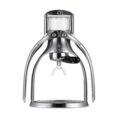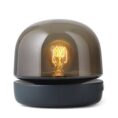Choosing the Right Cable Lugs for Industrial Applications: A Complete Guide
Choosing the Right Cable Lugs for Industrial Applications: A Complete Guide
Introduction
Cable lugs are essential components in electrical installations, ensuring secure and efficient connections between cables and terminals. Choosing the right cable lug can significantly impact the safety, durability, and performance of an electrical system.
At AL-MANARA, we manufacture high-quality copper and aluminum lugs designed to meet industrial requirements. In this guide, we will help you understand different types of cable lugs, how to choose the right one, and the best practices for installation.
1. What Are Cable Lugs?
A cable lug is a device used to connect electrical cables to terminals, circuit breakers, or other electrical equipment. It provides a secure mechanical and electrical connection, ensuring efficient current flow and reducing the risk of overheating.
Common Uses of Cable Lugs:
- Electrical panels and switchboards
- Power distribution networks
- Industrial machinery and automation
- Renewable energy systems (solar, wind)
2. Types of Cable Lugs
A. Standard Copper Lugs
- Made from high-purity copper (99.9%) for superior conductivity.
- Tin-plated for corrosion resistance.
- Suitable for general electrical installations.
B. Heavy-Duty Lugs
- Designed for high-power applications.
- Thicker walls and increased surface contact area.
- Common in substations and industrial plants.
C. Bi-Metallic Lugs
- Used to connect copper cables to aluminum terminals.
- Prevents galvanic corrosion.
- Ideal for power transmission systems.
D. Compression Lugs
- Requires crimping for secure connection.
- Available in both copper and aluminum.
- Used in high-voltage and heavy-duty applications.
3. How to Choose the Right Cable Lug
To select the correct cable lug, consider the following:
1️⃣ Material: Copper vs. Aluminum
– Copper lugs are best for high conductivity and durability.
– Aluminum lugs are lightweight and cost-effective but require oxidation protection.
2️⃣ Size & Compatibility
– The lug size should match the cable diameter and terminal size.
– Incorrect sizes can lead to overheating or loose connections.
3️⃣ Installation Method
– Crimping: Provides a secure connection but requires the right crimping tool.
– Soldering: Strong connection but time-consuming.
4️⃣ Environmental Conditions
– Outdoor use? Choose lugs with corrosion-resistant plating.
– High-temperature environments? Use heat-resistant materials.
4. Common Mistakes to Avoid
- ❌ Using the wrong size lug – Leads to poor conductivity and overheating.
- ❌ Improper crimping – Weak connections increase electrical resistance.
- ❌ Ignoring corrosion protection – Especially important for aluminum lugs.
- ❌ Over-tightening connections – Can cause mechanical damage and reduce conductivity.
5. Why Choose AL-MANARA Cable Lugs?
At AL-MANARA, we offer premium-quality cable lugs that meet industry standards.
- ✔ 99.9% high-purity copper for excellent conductivity.
- ✔ Tin plating for maximum corrosion resistance.
- ✔ Precision engineering to ensure a perfect fit for cables.
- ✔ Custom solutions tailored to your project requirements.
Conclusion
Choosing the right cable lug is crucial for a safe and efficient electrical system. Consider material, size, installation method, and environment to make the best choice.
💡 Looking for high-quality cable lugs? Contact AL-MANARA today to get expert advice and a quote.






















